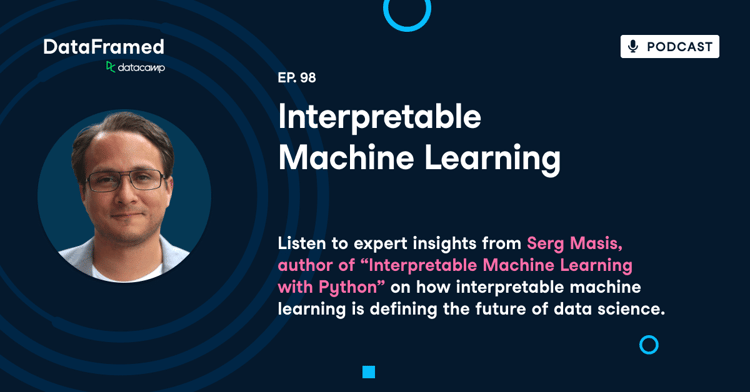The Curse of Dimensionality refers to the various challenges and complications that arise when analyzing and organizing data in high-dimensional spaces (often hundreds or thousands of dimensions). In the realm of machine learning, it's crucial to understand this concept because as the number of features or dimensions in a dataset increases, the amount of data we need to generalize accurately grows exponentially.
The Curse of Dimensionality Explained
What are dimensions?
In the context of data analysis and machine learning, dimensions refer to the features or attributes of data. For instance, if we consider a dataset of houses, the dimensions could include the house's price, size, number of bedrooms, location, and so on.
How does the curse of dimensionality occur?
As we add more dimensions to our dataset, the volume of the space increases exponentially. This means that the data becomes sparse. Think of it this way: if you have a line (1D), it's easy to fill it with a few points. If you have a square (2D), you need more points to cover the area. Now, imagine a cube (3D) - you'd need even more points to fill the space. This concept extends to higher dimensions, making the data extremely sparse.
What problems does it cause?
- Data sparsity. As mentioned, data becomes sparse, meaning that most of the high-dimensional space is empty. This makes clustering and classification tasks challenging.
- Increased computation. More dimensions mean more computational resources and time to process the data.
- Overfitting. With higher dimensions, models can become overly complex, fitting to the noise rather than the underlying pattern. This reduces the model's ability to generalize to new data.
- Distances lose meaning. In high dimensions, the difference in distances between data points tends to become negligible, making measures like Euclidean distance less meaningful.
- Performance degradation. Algorithms, especially those relying on distance measurements like k-nearest neighbors, can see a drop in performance.
- Visualization challenges. High-dimensional data is hard to visualize, making exploratory data analysis more difficult.
Why does the curse of dimensionality occur?
It occurs mainly because as we add more features or dimensions, we're increasing the complexity of our data without necessarily increasing the amount of useful information. Moreover, in high-dimensional spaces, most data points are at the "edges" or "corners," making the data sparse.
How to Solve the Curse of Dimensionality
The primary solution to the curse of dimensionality is "dimensionality reduction." It's a process that reduces the number of random variables under consideration by obtaining a set of principal variables. By reducing the dimensionality, we can retain the most important information in the data while discarding the redundant or less important features.
Dimensionality Reduction Methods
Principal Component Analysis (PCA)
PCA is a statistical method that transforms the original variables into a new set of variables, which are linear combinations of the original variables. These new variables are called principal components.
Let's say we have a dataset containing information about different aspects of cars, such as horsepower, torque, acceleration, and top speed. We want to reduce the dimensionality of this dataset using PCA.
Using PCA, we can create a new set of variables called principal components. The first principal component would capture the most variance in the data, which could be a combination of horsepower and torque. The second principal component might represent acceleration and top speed. By reducing the dimensionality of the data using PCA, we can visualize and analyze the dataset more effectively.
Linear Discriminant Analysis (LDA)
LDA aims to identify attributes that account for the most variance between classes. It's particularly useful for classification tasks. Suppose we have a dataset with various features of flowers, such as petal length, petal width, sepal length, and sepal width. Additionally, each flower in the dataset is labeled as either a rose or a lily. We can use LDA to identify the attributes that account for the most variance between these two classes.
LDA might find that petal length and petal width are the most discriminative attributes between roses and lilies. It would create a linear combination of these attributes to form a new variable, which can then be used for classification tasks. By reducing the dimensionality using LDA, we can improve the accuracy of flower classification models.
t-Distributed Stochastic Neighbor Embedding (t-SNE)
t-SNE is a non-linear dimensionality reduction technique that's particularly useful for visualizing high-dimensional datasets. Let's consider a dataset with images of different types of animals, such as cats, dogs, and birds. Each image is represented by a high-dimensional feature vector extracted from a deep neural network.
Using t-SNE, we can reduce the dimensionality of these feature vectors to two dimensions, allowing us to visualize the dataset. The t-SNE algorithm would map similar animals closer together in the reduced space, enabling us to observe clusters of similar animals. This visualization can help us understand the relationships and similarities between different animal types in a more intuitive way.
Autoencoders
These are neural networks used for dimensionality reduction. They work by compressing the input into a compact representation and then reconstructing the original input from this representation. Suppose we have a dataset of images of handwritten digits, such as the MNIST dataset. Each image is represented by a high-dimensional pixel vector.
We can use an autoencoder, which is a type of neural network, for dimensionality reduction. The autoencoder would learn to compress the input images into a lower-dimensional representation, often called the latent space. This latent space would capture the most important features of the images. We can then use the autoencoder to reconstruct the original images from the latent space representation. By reducing the dimensionality using autoencoders, we can effectively capture the essential information from the images while discarding unnecessary details.
The Curse of Dimensionality in a Data Science Project
Before building machine learning models, we need to understand what dimensions are in tabular data. Typically, they refer to the number of columns or features. Although I have worked with one- or two-dimensional datasets, real datasets tend to be high dimensional and complex. If we are classifying customers, we are likely dealing with at least 50 dimensions.
To use a high-dimensional dataset, we can either feature extraction (PCA, LDA) or perform feature selection and select impactful features for models. Additionally, there are many models that perform well on high-dimensional data, such as neural networks and random forests.
When building image classification models, I don't worry about dimensionality. Sometimes, the image can have up to 7,500 dimensions, which is a lot for regular machine learning algorithms but easy for deep neural networks. They can understand hidden patterns and learn to identify various images. Most modern neural network models, like transformers, are not affected by high-dimensional data. The only algorithms affected are those that use distance measurements, specifically Euclidean distance, for classification and clustering.
Browse our extensive catalog of machine learning courses and level up your skills.
Curse of Dimensionality FAQs
Why is the curse of dimensionality a problem in machine learning?
It can lead to overfitting, increased computation, and data sparsity, making it challenging to derive meaningful insights from the data.
Can we always use dimensionality reduction to solve the curse of dimensionality?
While it's a powerful tool, it's not always suitable. It's essential to understand the nature of your data and the problem you're trying to solve.
Does more data always mean better machine learning models?
Not necessarily. If the data is in high dimensions, it can lead to the curse of dimensionality. It's often about the quality and relevance of the data, not just the quantity.
Are all dimensionality reduction techniques linear?
No, there are both linear methods (like PCA and LDA) and non-linear methods (like t-SNE and autoencoders).
How does high dimensionality affect data visualization?
High-dimensional data is challenging to visualize directly. Techniques like PCA or t-SNE are often used to reduce dimensions for visualization purposes.

As a certified data scientist, I am passionate about leveraging cutting-edge technology to create innovative machine learning applications. With a strong background in speech recognition, data analysis and reporting, MLOps, conversational AI, and NLP, I have honed my skills in developing intelligent systems that can make a real impact. In addition to my technical expertise, I am also a skilled communicator with a talent for distilling complex concepts into clear and concise language. As a result, I have become a sought-after blogger on data science, sharing my insights and experiences with a growing community of fellow data professionals. Currently, I am focusing on content creation and editing, working with large language models to develop powerful and engaging content that can help businesses and individuals alike make the most of their data.

